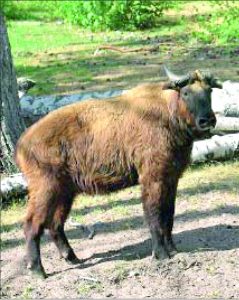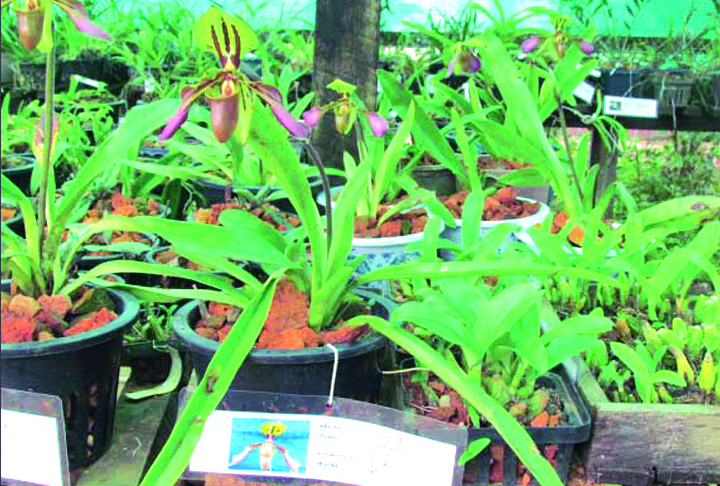12 August
Perfectly fitting in faultless and flawless environment, Khakaborazi National Park and Phon Kan Razi Wildlife Sanctuary are situated in the northern Myanmar state of Kachin in an outlying sub-range of the Greater Himalayan mountain system.

Located at Pan Nan Din Small Town of Naungmung Township in Putao District, Khakaborazi National Park stands out at 3,000 feet at the lowest average level. The famous peak named “Khakaborazi” is believed to be Myanmar’s highest mountain, and with its height of 19,296 feet the probable highest mountain in South East Asia. With an area of 1,472 square miles, the park has the glorious status entitled with ASEAN Heritage domain.
Five types of forests
The park is entirely mountainous and is characterized by year-round icy mountain grass forest; blue-colored pine forest in the valley; a sub-tropical temperate zone mixed forests from 7,000 to 9,000 feet; various bamboo forests; broad-leaved tall timber tree yielding reddish, resinous wood.
Declaring ASEAN Heritage Park
Khakaborazi was established as a natural reserve on 30 January 1996 and as a national park on 10 November 1998. The Khakaborazi National Park has been declared as ASEAN Heritage Park in 2003.
It is the last stronghold for biodiversity in Myanmar. Extraordinarily rich flora and fauna, ranging from lowland tropical to alpine species still await proper research and identification.
Conservation needed
It was agreed that common cooperation is necessary to conserve and manage ASEAN Heritage Parks for the development and implementation of regional conservation and management action plans as well as regional mechanisms complementary to and supportive of national efforts to implement conservation measures.
In the Kachin State at northernmost region of the country raises the loftiest peak in South East Asia, the Mt. Khakaborazi, capped throughout all seasons by a glacier that feeds into the Irrawaddy. The Irrawaddy River arises by the confluence of the N’mai (Nam Gio) and Mali Rivers in Kachin State. This most celebrated of rivers in Myanmar wends its way through the heart of the country until it disperses on the delta as myriad waterways that finally empty into the sea. Therefore, conservation, protection and preservation are needed.
In the area between Pan Nan Din Small Town and Naungmung Township, it is important to protect the endangered plants and animal species along with their natural habitat, since UNESCO has been yet to identify and categorize. The main concern is to preserve the habitats so that the future generations of wildlife and even humans can enjoy it.
Wildlife
In addition to rare species such as Takin, Musk Deer, Blue Sheep, Black Barking Deer, Phet Gyi (Muntiaus putaoensis), mammal species and insects such as butterflies are present in the National Park. The register showed that it is the home for (297) different trees; (13) variety of bamboos; (10) different cane trees; (22) medicinal herbs; (106) kinds of orchids; (42) different animals; (370) birds; (365) butterflies; (43) different frogs with habitat in water and land; (32) different snakes; (3) different tortoise; (6) different lizards; and (49) bumble bees.
Many more to be registered
Myanmar still enjoys a bountiful, relatively untouched natural environment which holds mammal species, species of birds, species of reptiles and species of flora including tree species.
Rare species and plants
Rare species such as white-handed gibbon; wild goat; musk deer; and glacier mountain goats are the rare species in the area. In addition to the rare herbal trees and orchids, there is red panda; mountain red goat; takin also called cattle chamois or gnu goat; musk deer; Himalayan bear; wild goat; glacier goats; long tail monkeys; Assam monkey; Himalayan bird; rare pheasant; Himalayan owl; Putao species of orchid (Bulbophyllum); black orchid; rare tiger orchid; tonic herb; poisonous herbal tubers and bulbs; glacier herbal roots; and rare butterflies.
Briefing through video clips
Necessary briefing and explanation are offered to the local guests and foreign tourists at the Khakaborazi National Park Exhibit Hall about the rare species and wildlife. In order to ensure the presentation runs smoothly, a number of services with the audio visual equipment have been facilitated in the hall at the venue.
Local Black Orchid and Rare Tiger Orchid
Extremely rare plants in Myanmar such as local Black Orchid and Rare Tiger Orchid are the treasure of Putao. Varieties of orchids displayed for the visitors at the Khakaborazi National Park Exhibit Hall are the rare plants originated from Putao, Naung Mung, and Ma Chan Baw. Some orchids being explored in the areas are simply registered and they are yet to be classified and named.
Plans underway to sell as finished produce
With a view to protect and preserve the medicinal and herbal plants in Putao from extinction, all the rare curative plants and roots would be barred from selling in raw form, and that plans are underway to sell and distribute as finished and final produce.
In cooperation with the National Institute of Biological Research of the Republic of Korea and the Department of Forest of Myanmar, a research facility is now under construction beginning March 2019 and expected to be completed in October 2019. When the facility is completed, local people would have job opportunities in the line of business of local finished products.
Administrator U Aung Moung of Khakaborazi National Park explained that the local villagers would be provided with the relevant training courses in herbal cultivation methods through modern techniques.
Easy access to Putao in a single day
Now, Putao is accessible in a single day by direct flight from Yangon-Mandalay-Putao. Flight is available from Myitkyina to Putao, and that people also can travel by car from Myitkyina to Putao.
Over the years, the incumbent government has facilitated and upgraded the roads and bridges on the motorway from Myitkyina to Putao. The journey from Myitkyina to Putao could be travelled in just 12 hours. In the past, the trip was possible only by air and cargo convoys in a difficult way consuming many days or even weeks.
Now, the visit to Putao could be realized in a single day, where the water, plants, animals, birds, fish, habitat, natural corridor to icy mountain. The residents and increase tourism to untapped natural resources in the area.
Comfortable time for visit
I was at the ASEAN Heritage Park at the end of April and the beginning of May when summer time is retreating with the welcoming of small drops of rain. It was very light rain that one can use the word “mist”. “Drizzling” usually implies a little harder rain than “sprinkling”. The normal answer is sprinkle at first, or maybe drizzles if it persists or is a bit heavier. We could refer the weather at the park as “rain forever” in the area like the most popular song named “Sumbrabum”.
The best time to visit Putao is from February to May at the end of winter and the open season for travelling. The profuse blooming time of rhododendron in bright red with the breathtaking landscape seen from the motorway between Sumbrabum and Putao with deep valleys surrounded by mountains enveloped with the huge white clouds high above the head sending the body and soul into heavenly paradise.
Places to visit in Putao
Putao Town is developed from the village named Putaung, and that the places to visit are Kaungmulone Pagoda, Spirit islanda (Nat Kyun), Hopine Shan village, Upper Shankhaung village, Mularshide Lizu village and Mula River, Nankhan Rawan village, Zewon village, Machanbaw View point and Malikha River.
For photographers, it may be advisable exploring Namshalkut Lisu village, Pamati village, Nanbala Creek, Wasaw village, Lamawachi village and Mudon village to take fine photos.
For adventurers and nature lovers, trekking and hiking around Putao as per the approved programs will serve to be in trekking paradise.
Translated by UMT (Ahlon)


